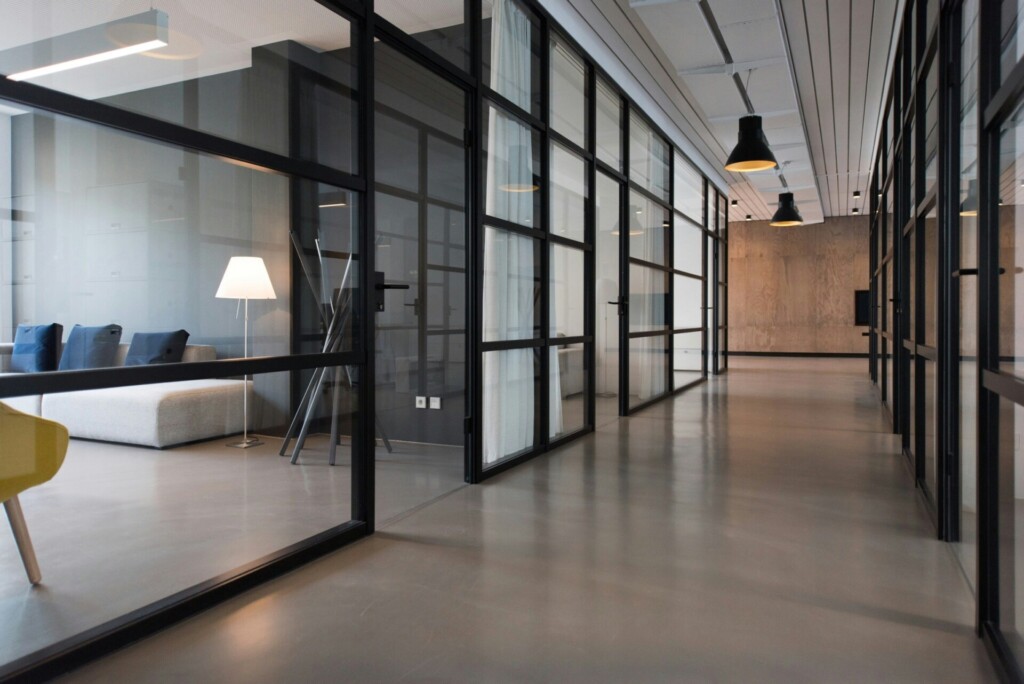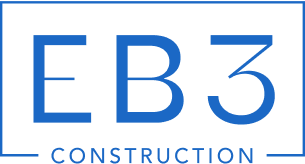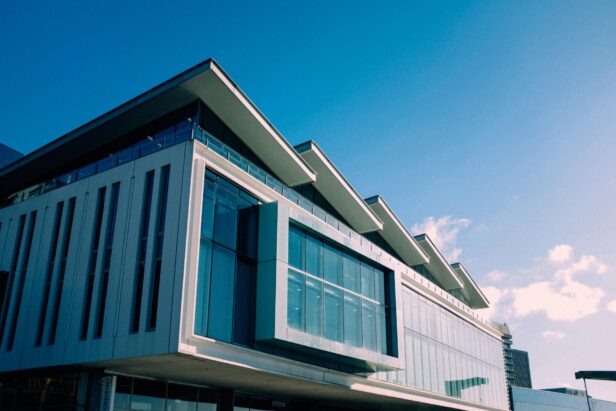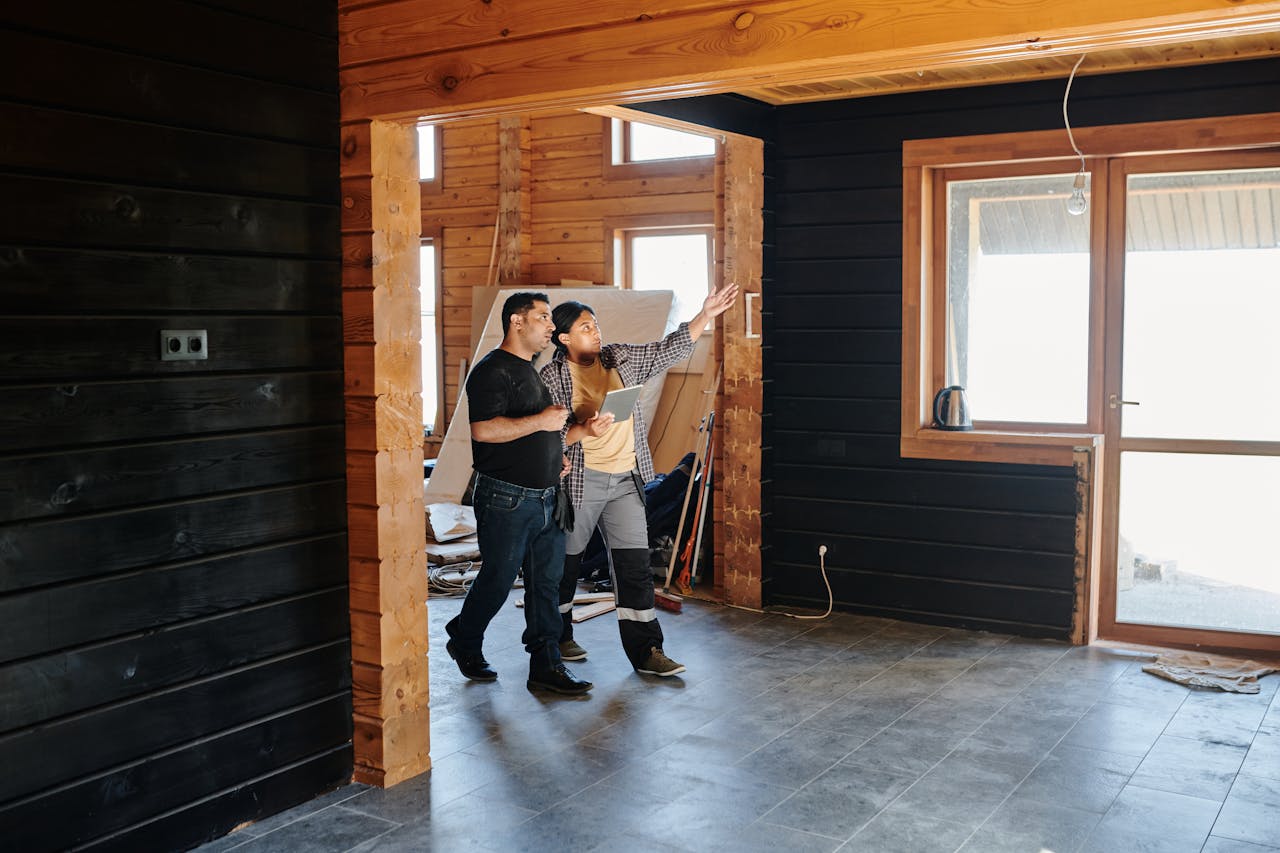When was the last time you walked into a commercial space and thought, “This layout just doesn’t work anymore”? Commercial remodeling addresses this challenge by transforming outdated or inefficient spaces into environments that meet modern business needs. At EB3 Construction, we view commercial remodeling as more than just aesthetic updates—it’s a strategic investment in your business’s functionality and future growth.
Commercial remodeling involves significant structural and design modifications to existing business spaces. Unlike simple maintenance or minor renovations, we handle major reconstructions that fundamentally alter a space’s function. Our projects often include reconfiguring floor plans, updating electrical and mechanical systems, strengthening structural elements, and completely refreshing interior finishes to align with your brand and operational needs.
The scope of commercial remodeling varies widely depending on business needs. For retail stores, we might focus on creating an immersive customer experience through improved traffic flow and updated fixtures. Office remodels often center on collaborative spaces and technology integration, while restaurant projects require careful attention to kitchen efficiency and dining atmosphere. With recent changes in the workplace, many clients are reimagining their spaces to accommodate hybrid work models, exemplifying how commercial remodeling adapts to evolving business practices.
How Much Does a Commercial Remodel Cost?

Understanding the financial scope of a commercial remodel is essential for property owners and developers planning to renovate their spaces. We approach each project with careful cost estimation to ensure our clients have realistic expectations before breaking ground. Commercial remodeling costs can vary substantially based on numerous factors that influence the final investment.
The fundamental starting point for any commercial remodel budget is the per-square-foot estimate. Currently, these costs range from $20-$30 per square foot for basic renovations to over $500 per square foot for premium, high-end commercial transformations. During the spring 2024 construction season, we’ve seen material costs stabilize somewhat after the volatility of previous years, though certain specialized materials remain at premium pricing.
Building Class and Usage Considerations
The classification of your commercial building significantly affects renovation costs. Class A buildings with upscale interiors and prime locations typically demand higher-quality finishes and more sophisticated systems integration. Class B structures, which make up the majority of commercial buildings, generally require moderate investment, while Class C buildings in lower-income areas may have more basic renovation requirements but could need extensive infrastructure updates.
The intended use of your space directly impacts cost structures. Medical facilities, for example, typically cost between $451-$1018 per square foot due to specialized requirements for plumbing, electrical systems, and compliance with healthcare regulations. In contrast, single-story office renovations generally range from $289-$437 per square foot, reflecting their more standardized requirements.
Professional Services and Labor Costs
When we develop a commercial remodel budget, we incorporate design and architectural services, which typically account for 4-20% of the total project cost. Working with a design-build firm like ours can often streamline these costs by integrating design and construction services under one roof, eliminating coordination inefficiencies.
Labor represents a substantial portion of any commercial renovation budget. According to the Construction Labor Market Analyzer, labor costs generally constitute between 20-50% of the total project budget. The exact percentage depends on project complexity, regional labor rates, and the level of skilled craftsmanship required. In urban markets, these costs tend to be higher than in rural areas due to prevailing wage rates and availability of specialized trades.
Material Selection and Quality Considerations
Material quality dramatically influences both immediate costs and long-term value. For example, flooring costs can range from less than $1 per square foot for basic commercial carpet to over $100 per square foot for premium stone or specialized materials. During our preconstruction phase, we help clients evaluate these options based on durability, maintenance requirements, and aesthetic impact.
When selecting finishes and fixtures, we encourage clients to consider lifecycle costs rather than just upfront expenses. A granite countertop might cost up to $100 per square foot, but its durability can make it more economical than repeatedly replacing lower-quality alternatives. This approach to material selection helps maximize the return on your renovation investment.
Code Compliance and Permitting
Compliance with current building codes often constitutes a significant portion of commercial remodeling costs. Accessibility upgrades to meet ADA requirements, environmental compliance measures, and energy efficiency standards all impact the bottom line. For older buildings requiring extensive upgrades to meet current codes, these costs can be substantial.
Permitting fees vary by location but typically include plan review, building permits, and inspection fees. For complex renovations in major metropolitan areas, these costs can reach tens of thousands of dollars and should be factored into early budget planning.
| Building Type | Cost Per Square Foot ($) |
|---|---|
| High-rise Office | 430-1001 |
| Mid-Rise Office | 330-870 |
| Single-story office | 289-437 |
| Medical Office Buildings | 451-1018 |
| Government Buildings | 426-844 |
| Gymnasiums | 347-683 |
By thoroughly analyzing these cost factors at the outset, we create comprehensive budgets that minimize surprises and allow for strategic decision-making throughout the commercial remodeling process. Our preconstruction services include detailed cost breakdowns that help clients prioritize elements that deliver the greatest value for their specific business needs.
What Are the Key Phases of the Commercial Remodeling Process?
At EB3 Construction, we guide commercial remodeling projects through distinct phases to ensure quality, compliance, and success for our clients. Understanding this process aids developers and property owners in anticipating what lies ahead when transforming their commercial spaces.
Initial Assessment and Planning
Every successful commercial remodel begins with a comprehensive site assessment. We conduct thorough property evaluations to identify structural issues, code compliance concerns, and potential challenges before work commences. This crucial first step allows us to develop realistic budgets and timelines that account for the unique characteristics of your property.
Following the site visit, we conduct detailed planning consultations where we translate your vision into actionable plans. During this phase, we define the project scope, establish priorities, and identify potential constraints such as building access limitations or operational requirements if the space needs to remain partially functional during construction.
Design Development and Engineering
The design phase transforms concepts into concrete plans. Our team collaborates with architects to develop drawings that balance aesthetics with functionality. We consider workflow efficiency, brand identity, and future growth needs while ensuring the design meets current building standards.
Engineering consultations follow as we bring in specialized professionals to address mechanical, electrical, plumbing (MEP), and structural requirements. The complexity of commercial spaces often requires sophisticated systems integration, from advanced HVAC configurations to specialized electrical loads for commercial equipment.
This collaborative approach results in comprehensive construction documents that guide the entire project. These documents include detailed specifications for materials, finishes, and equipment that align with both your budget and operational requirements.
Permitting and Regulatory Compliance
The permitting process can be one of the most challenging aspects of commercial remodeling. We manage this by maintaining strong relationships with local building departments and understanding jurisdiction-specific requirements.
Our team prepares and submits all necessary documentation to secure building permits, often including architectural plans, engineering calculations, and project specifications. We also coordinate any required inspections with local authorities throughout the construction process.
For projects with specific zoning considerations, we handle variance requests or conditional use permits when necessary. Many urban projects face parking requirements, signage restrictions, or historic preservation guidelines that must be carefully addressed before construction can begin.
| Phase | Duration |
| Planning and Design | 1-3 months |
| Permitting and Approvals | 3-5 weeks |
| Construction | 3-6 months |
| Final Inspections and Handover | 1 week or more |
Construction Execution
When construction begins, we implement robust project management systems to coordinate subcontractors, manage material deliveries, and maintain quality control. Daily site supervision ensures work progresses according to plans and specifications while adhering to safety protocols.
The construction phase typically includes demolition of existing elements, structural modifications, utility rough-ins, and installation of new systems. We schedule these activities to minimize disruption, especially for occupied buildings where business continuity is essential.
Throughout construction, we conduct regular progress meetings with stakeholders to review completed work, address any challenges, and make necessary adjustments. This transparent communication helps prevent misunderstandings and keeps projects moving forward efficiently.
Project Completion and Handover
As construction nears completion, we conduct comprehensive quality inspections to identify and address any punch list items. These final touches ensure the space meets both our high standards and your expectations.
We coordinate final building inspections with local authorities to secure certificates of occupancy or completion. Our team also assembles operation manuals, warranty information, and maintenance schedules for all installed systems and equipment.
The handover process includes client training on new systems and a thorough walkthrough of the completed space. We remain available to address any questions or concerns that arise after you take occupancy, ensuring a smooth transition into your newly remodeled space.
Working with experienced commercial contractors like EB3 Construction throughout these phases helps control costs, maintain schedules, and create environments perfectly tailored to your business needs. Our proven process navigation skills mean fewer surprises and more successful outcomes for your commercial remodeling investment.
How Do Building Class and Space Use Impact Commercial Remodeling?

When we begin a commercial remodeling project, one of the first factors we evaluate is the building’s classification and intended use. These elements fundamentally shape our construction approach, timeline expectations, and budget considerations. Understanding the relationship between building class and space use allows us to develop more accurate project scopes and deliver results that align with both regulatory requirements and client expectations.
Building Classifications: More Than Just Labels
Commercial buildings fall into distinct classifications based on quality, location, and market position. These classifications aren’t merely administrative designations—they directly influence remodeling complexity, material selections, and system requirements. As we evaluate properties, we categorize them into three primary classes:
Class A buildings represent premium commercial space with upscale finishes, advanced systems, and exceptional accessibility features. When remodeling these properties, we focus on preserving their prestigious market presence while integrating high-quality finishes and state-of-the-art technology. These projects typically demand premium materials and skilled craftsmanship to maintain the building’s competitive position for attracting top-tier tenants who expect rents above the market average.
Class B buildings make up the majority of commercial properties we renovate. These spaces feature good-quality fixtures and standard finishes but lack the premium elements of Class A spaces. Our remodeling approach here balances quality with cost-effectiveness, as these properties compete for a wide range of potential tenants. Recent market shifts have created interesting opportunities in this segment, with some former Class A properties moving into this category after modest updates to lobbies and amenities.
Class C properties present unique renovation challenges due to their functional limitations and typically older infrastructure. Located in less prime areas, these buildings require fundamental improvements to meet modern tenant expectations. Our teams often address more extensive infrastructure issues, from outdated electrical systems to inefficient HVAC configurations, while working within tighter budget constraints.
Space Use Considerations: Function Drives Form
The intended use of commercial space significantly impacts how we approach remodeling projects. Different business types have distinct operational needs that translate into specific construction requirements:
Retail spaces prioritize customer flow patterns, visual merchandising opportunities, and brand presentation. Our remodeling work for retail clients focuses on creating inviting entrances, maximizing product visibility, and designing layouts that guide customers through the space intuitively. These projects often involve specialized lighting plans, flexible fixture installations, and durable flooring systems that can withstand high traffic volumes.
Office environments require careful balancing of collaborative spaces with private work areas. The recent shift toward hybrid work models has transformed how we approach these renovations. We’re now incorporating more technology integration points, flexible meeting areas, and spaces designed for both in-person and remote collaboration. Acoustical considerations have become increasingly important as open-plan areas must coexist with spaces for focused work.
Medical facilities demand specialized remodeling expertise due to their unique requirements for infection control, patient privacy, and equipment accommodation. These projects involve careful coordination of mechanical systems, specialized material selections that meet stringent sanitation standards, and layouts that optimize staff workflow while ensuring patient comfort and accessibility.
Regulatory Compliance: The Unseen Framework
Beyond classifications and usage patterns, commercial remodeling projects must navigate a complex regulatory landscape that varies by building type and location. We coordinate these requirements from the earliest planning stages to ensure project success:
Local building codes establish minimum standards for structural integrity, fire safety, and mechanical systems. The complexity of these requirements scales with building size and use classification. What might be a straightforward approval process for a small retail renovation becomes significantly more complex for a multi-story office building or medical facility conversion. Our team maintains current knowledge of code requirements to anticipate potential challenges before they impact project timelines.
Accessibility compliance has become increasingly important in commercial remodeling projects. The Americans with Disabilities Act (ADA) establishes specific requirements for entrances, corridors, restrooms, and other building elements. During renovations, we often need to bring existing features into compliance with current standards, which can impact space planning and budget considerations, particularly in older buildings where doorways, hallways, and restrooms may not meet modern requirements.
Environmental regulations influence material selections, waste management practices, and energy efficiency measures in our projects. These considerations vary significantly based on building class and use. Higher-end properties often incorporate advanced sustainability features as market differentiators, while budget-conscious renovations might focus on meeting minimum efficiency standards while controlling costs.
Balancing Aspirations with Realities
The intersection of building class and space use creates unique dynamics in each remodeling project. We’ve found that successful renovations require careful calibration of client aspirations against practical realities:
Budget constraints often drive decisions about scope and material selections. While a Class C property owner might aspire to Class A finishes, the return on investment rarely justifies such expenditures. We help clients identify strategic improvements that enhance property value without overbuilding for their market position. Sometimes focusing renovation efforts on key amenities or common areas delivers better returns than attempting comprehensive transformations.
Project timelines vary considerably based on building classification and use. Retail renovations typically require aggressive scheduling to minimize business disruption, while office renovations might allow for phased approaches that accommodate ongoing operations. Understanding these dynamics helps us develop realistic construction schedules that account for both physical building constraints and tenant operational needs.
Material availability has become an increasingly important consideration in today’s construction environment. Supply chain disruptions can disproportionately impact certain building classes, as premium finishes often have longer lead times and fewer substitution options. We proactively address these challenges through early procurement strategies and by identifying alternative materials that maintain design intent while accommodating scheduling constraints.
Strategic Approaches for Different Building Classes
The most effective remodeling strategies align with a building’s classification while accommodating its intended use. Our approach varies significantly based on these factors:
For Class A properties, we focus on preserving premium positioning through careful integration of new elements with existing systems. These projects often require working during off-hours to minimize disruption to high-value tenants. Material selections must maintain the building’s prestigious status while incorporating modern efficiencies. We frequently collaborate with specialized subcontractors for custom installations and finishes that distinguish these properties in competitive markets.
With Class B renovations, we emphasize practical improvements that enhance functionality while controlling costs. These projects often involve upgrading building systems to improve efficiency without completely replacing infrastructure. Strategic improvements to common areas and amenity spaces can significantly enhance market positioning without the expense of comprehensive renovations. We often incorporate modular design elements that allow for future flexibility as tenant needs evolve.
Class C remodeling projects prioritize fundamental improvements that bring spaces to modern functional standards. These renovations frequently involve addressing deferred maintenance while making targeted upgrades to increase rental potential. Our approach often includes identifying cost-effective ways to improve building appearance through updated finishes in high-visibility areas while focusing technical improvements on systems that impact tenant comfort and operating costs.
Understanding these nuanced relationships between building classification, space use, and regulatory requirements allows us to develop more effective remodeling strategies. By tailoring our approach to each project’s specific context, we deliver renovations that enhance property value while meeting practical operational needs—creating spaces that work better for both property owners and their tenants.
Why Should You Work with Specialized Commercial Remodeling Contractors?

When we approach commercial remodeling projects at EB3 Construction, we bring more than just hammers and hard hats to the table. Our specialized expertise adds tangible value throughout the construction process. For developers and property owners dealing with complex commercial builds, this expertise is particularly valuable in navigating the intricacies of space utilization, building codes, and project logistics.
The Design-Build Advantage
We’ve found that the design-build approach offers significant benefits to our commercial clients. By integrating design and construction under one roof, we create a seamless workflow that eliminates common disconnects between architects and builders. This integration is not just convenient—it fundamentally changes how projects unfold, allowing real-time collaboration to resolve potential issues before they become costly problems.
The financial implications are substantial. When we handle both design and construction phases, we typically achieve cost savings of 5-10% compared to traditional methods where these services are contracted separately. These savings come from more efficient resource allocation, reduced administrative overhead, and the elimination of communication barriers that often lead to expensive change orders.
Streamlined Project Management
Our role as specialized commercial remodeling contractors extends beyond basic construction. We coordinate the entire project ecosystem, from initial concept to final inspection. This comprehensive oversight allows us to maintain quality control while keeping all moving parts synchronized with your project timeline.
We leverage our network of vetted subcontractors—specialists we’ve worked with repeatedly and trust to deliver exceptional results. This network is particularly valuable during material shortages or when specialized trades are in high demand. Instead of scrambling to find qualified professionals, we activate established relationships to keep your project moving forward without compromising on quality or compliance.
Regulatory Navigation and Compliance Expertise
Commercial construction requires navigating a complex regulatory landscape. We manage compliance across multiple aspects—building codes, fire safety requirements, ADA accessibility standards, and increasingly stringent energy efficiency mandates. The 2022 updates to commercial building energy codes in many jurisdictions add complexity that requires specialized knowledge for proper implementation.
This regulatory expertise prevents costly mistakes and rework. When we handle permitting and inspection coordination, we draw on our established relationships with local code officials and our thorough understanding of jurisdiction-specific requirements. For instance, recent changes in commercial ventilation standards following pandemic concerns have created new compliance challenges that we proactively address during the planning phase.
Maximizing Value While Minimizing Disruption
For occupied commercial spaces, minimizing operational disruption is a critical concern. We develop phased construction strategies that allow businesses to maintain operations throughout renovation projects. Our scheduling takes into account critical business periods, coordinating noisy or disruptive work during off-hours while maintaining overall project momentum.
We also bring value engineering expertise to the table, identifying opportunities to reduce costs without compromising quality or functionality. This might involve alternative material selections, construction methods, or timing adjustments that preserve your vision while respecting budget constraints. By addressing these considerations early in the process, we avoid mid-project compromises that often lead to less satisfactory outcomes.
Our specialized commercial remodeling expertise ultimately ensures greater certainty in your project outcome. When we manage your commercial renovation, you benefit from our accumulated knowledge across similar projects, our established processes for quality assurance, and our commitment to delivering spaces that meet both functional requirements and aesthetic goals. This specialized approach ensures your commercial space not only fulfills its practical purpose but also effectively represents your brand identity.
Conclusion: Planning Your Commercial Remodeling Project
Commercial remodeling projects represent significant investments in your business’s future. Through our daily coordination of these transformations, we’ve observed that success relies on three key elements: thorough planning, realistic budgeting, and selecting the right construction partners. Projects that consistently deliver the best returns are those where owners take time to develop clear objectives before breaking ground.
Budget considerations are particularly crucial during your planning phase. We build detailed cost projections based on current material pricing and labor conditions while maintaining contingency funds for unexpected discoveries. This approach helps prevent common frustrations, such as mid-project scope adjustments that can extend timelines and increase expenses. With construction materials facing ongoing supply chain challenges in 2025, proactive planning and early procurement decisions have become vital parts of our project management strategy.
When selecting a construction partner for your commercial renovation, look for a team that truly understands your business operations, beyond basic credentials. Our approach emphasizes developing phased construction plans that minimize disruption to your daily activities. We coordinate subcontractor schedules carefully, establish containment barriers when needed, and maintain clear communication throughout the project. Remember, the true measure of a successful commercial remodel isn’t just the completed space but how smoothly your business continued to operate during construction.
Ready to transform your commercial space into an environment that enhances operations and strengthens your brand? Contact EB3 Construction to discuss your commercial remodeling vision.




